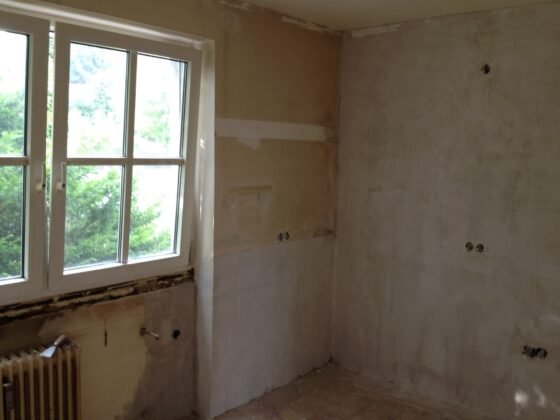Table of Contents Show
Buildings heated with fossil fuels emit greenhouse gasses that harm our planet, but cleaner heating technologies are becoming more prevalent.
IoT integration enables homeowners to utilize mobile applications and voice controls to remotely monitor and adjust their furnace systems, thus increasing energy efficiency while enriching customer experience.
For insights on IoT integration enhancing energy efficiency in furnace systems, click here for more details.
Cleaner heating options are here to stay and grow. New tech like smart controls and radiant floors help you save energy. You can cut costs and help the planet, while staying cozy. Learn how updating your heating system can make a big difference today!
Radiant floor heating
Many homeowners strive to heat their homes efficiently. They seek to use less energy for heating purposes while simultaneously making sure their buildings retain heat longer – two strategies known as efficiency and retention.
Radiant floor heating consists of tubes installed beneath the floors that circulate hot water or electricity to warm their installed rooms, radiating heat upwards to warm ceilings, walls, and floors. They’re especially beneficial in large rooms with high ceilings; retrofits or new construction projects may employ these methods of warming their environments.
Electric radiant systems have become more accessible and more cost-effective to install, while hydronic systems (which utilize boiler-heated water in a network of tubes buried below the floor) tend to be cheaper to run but require ongoing maintenance costs.
Hydronic systems use hot water heated to a specific temperature instead of electricity to generate hot air through ducts, providing consistent comfort throughout a room without cold spots and wasted energy wastage.
Furthermore, advanced thermal storage technologies reduce energy wastage when there is low demand and enable renewable energy integration.
Computer heat
Computers generate considerable heat when working hard. The waste heat generated is then dissipated through thermal conduction, convection, and radiation.
Global warming is exacerbated by the majority of this wasted heat rising through the ceiling and into the atmosphere. But engineers are looking at an energy-efficient heating system that uses computer waste heat to warm homes efficiently.
Heat pumps
Electric heat pumps are another modern heating technology that can assist with meeting decarbonization goals. These devices use electricity and refrigerant to transfer energy from the earth or atmosphere directly into your building without using fossil fuels as an energy source.
Ice and thermal storage
Advanced thermal storage technology enables HVAC systems to store excess energy for use during off-peak electricity rates when electricity costs are lower, helping reduce electricity bills while creating a greener world.
Ice storage is a highly efficient thermal energy storage technology with the potential to help buildings lower cooling costs and emissions more easily. Ice storage uses electricity at night to make ice before discharging it during the day for building cooling without straining power grid resources further.
As opposed to forced air systems that rely on blowing hot air through ducts, hydronic heating, and cooling utilize water heated at an optimal temperature and dispersed via pipes – creating superior comfort without cold spots or fluctuating temperatures.
Additionally, geothermal heating and cooling technologies require less maintenance, qualify for energy efficiency incentives, and can save up to 50% in operating expenses compared to traditional cooling and heating technologies.
Zoning systems
Zoning systems for both ducted and ductless HVAC systems create separate heating and cooling temperature zones within your home or building, each featuring its own thermostat with sensors that constantly report back to a central control panel. Based on the thermostat input, the control panel decides to activate any systems or which equipment to use.
Zoning systems can be retrofitted into existing homes with ductwork or added as new construction projects, and their installation requires no remodeling of your ductwork system.
Zoning works by installing motor-driven dampers within your ductwork controlled by individual thermostats to open and close as dictated by each thermostat setting to deliver conditioned air only where it’s needed – helping eliminate hot or cold spots throughout a home while decreasing energy use.
Smart thermostats
In the past, thermostat settings were the only means of manually controlling heating and cooling in buildings; now, smart home systems can monitor and automatically adjust them for you.
These high-tech thermostats provide energy management services with access to an invaluable data stream for tracking the performance of HVAC systems in real time, including their use pattern, weather conditions, and savings opportunities.
This data can then be prioritized based on predicted usage patterns in each home and savings opportunities identified based on home usage patterns and climate forecasting models.
Smart thermostats are gaining popularity in individual houses but are less commonly found in multi-unit residential buildings (MURBs). Installing these smart thermostats in MURBs to drive cost savings, carbon reductions, and improved home comfort for residents. They can lower energy consumption by integrating with other sustainable technologies like solar or responsive shades.
Energy-efficient gas furnaces
Maintaining warm buildings requires considerable energy consumption. Harnessing it is challenging, but technological innovations that help increase energy efficiency have come a long way since then.
An energy-efficient gas furnace is one example of this technology, using a secondary heat exchanger to extract extra heat from exhaust gasses that would typically be vented outside.
These furnaces may have higher upfront costs than standard 80% AFUE furnaces, but their energy savings more than offset that initial outlay. Furthermore, gas is significantly less costly than oil or electricity sources for power.
Any homeowner wishing to lower energy costs should consider these effective furnaces, which are available in a range of sizes and may even be fitted with air purifiers to enhance indoor air quality.










